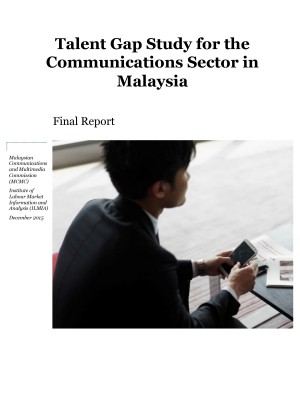A Talent Gap Study for the Communications Sector in Malaysia
This study was initiated in 2014 within a partnership arrangement of the Malaysian Communications and Multimedia Commission (MCMC) and ILMIA to analyse the talent requirements of the Communications Sector. The Malaysian Communications landscape with a penetration of more than 140% has expanded vigorously both by subscriber numbers and in sophistication in service offerings. In the future, further expansion will be driven by the usage of mobile data and broadband (both fixed and mobile). The critical question is whether Malaysia has the right talent strategy in place to deal with these dynamic changes and sustain the growth momentum. The study focused principally on the Telecommunications Sub-sector and assessed current and future manpower issues for wireless and fixed line technologies, information and network security and emerging technologies (like Cloud computing & Big Data analytics) impacting the communications industry. A job classification framework was developed comprising 29 key job families, 139 job roles and 316 technical competencies relevant for the selected focus areas. Current and future talent workforce needs were assessed in the context of industry demand and workers coming from educational and training entities. The telecommunications sector workforce must be adaptable and agile to meet the ever changing dynamic industry trends, pointing to the need for constant re-skilling of workers. Job talents were very varied across each of the focus areas; critical job roles and competencies were identified. Talent management will emphasize exposure in an innovative environment, a structured career path and attractive rewards enhanced by training incentives.
 Bahasa Melayu
Bahasa Melayu  English
English 